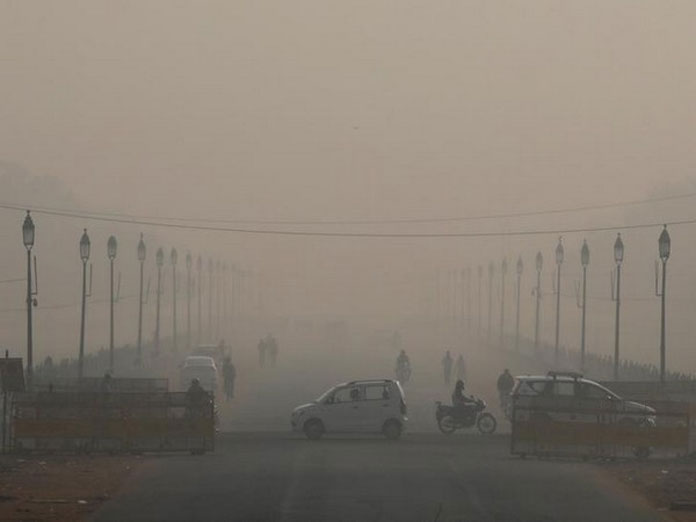Live
- A Soulful Celebration of Global Music
- Brahmin Community delegation felicitates CM Saini
- Allu Arjun Visits Chiranjeevi’s House for Lunch Meet
- Toyota organising TG Grameena Mahotsav
- Special rituals conducted at Maramma Temple
- Siddaramaiah has special love for Muslims: BJP
- We can’t afford spending less than 6% of GDP on healthcare
- Guinness World Record for continuous Hanuman Chalisa chanting
- REMOTE TRIBAL AREA TO GET NEW BRIDGE
- Dr LB College, Woxsen teams win in Climate Tank Accelerator event
Just In

According to System of Air Quality and Weather Forecasting And Research SAFAR data, the air quality of Delhi showed levels of prominent pollutants PM particulate matter 10 at 369, which is considered as very poor
Air quality in the national capital nosedived to 'very poor' on Sunday morning and is likely get worse in the next couple of days.
According to System of Air Quality and Weather Forecasting And Research (SAFAR) data, the air quality of Delhi showed levels of prominent pollutants PM (particulate matter) 10 at 369, which is considered as 'very poor'.
An AQI between the range of 51 to 100 is considered as satisfactory, 101-200 is moderate, 201-300 falls under the poor category, whereas 401-500 range is severe.
The organisation has advised the people residing in Delhi to avoid all physical activities outdoors and warned asthmatics to keep relief medicines handy. "Stop any activity level if you experience any usual coughing, chest discomfort, wheezing, breathing difficulty, or fatigue," it added.
In November last year, SAFAR had conducted a study which revealed that 41 per cent of the pollution in Delhi was caused by the transport sector. It had also stated that "after transport, wind-blown dust is the second major contributor with 21.5 per cent followed by Industries at 18.6 per cent.
"The other minor contributors are Power and Residential sectors contributing about 4.9 and 3 per cent respectively. Others contribute about 11 per cent. Residential Sector includes slum, crop Residue, cow dung, a street vendor, household, DG Set, wood burning, etc while other Sector includes MSW Plants, MSW Open Burning, Crematory, Aviation, Incense Stick, Brick Kiln," the state-run body had revealed.
Air quality in Mumbai has gotten worse with the climatic change after hazy conditions covered the regions' skyline yesterday. The AQI is hovering at 259 and is likely to get higher in the next few days.
During winter season each year, most of northern India suffers from a spike in toxicity in the air due to the change in weather patterns and crop residue burning in states such as Haryana, Punjab and Uttar Pradesh.
Not only that, a dip in temperature along with low wind speed also tends to trap air pollutants closer to the ground.

© 2024 Hyderabad Media House Limited/The Hans India. All rights reserved. Powered by hocalwire.com







